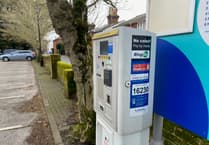CONTROVERSIAL plans for 207 new homes on land next to Chase Road in Lindford have been granted permission by the district council's north planning committee. Permission in principle had been granted in February 2005 and the committee met again last month to discuss specific details relating to the siting, design, external appearance and landscaping of the project. Of the 15 councillors present at the end of the discussion, 13 voted in favour of chief planning officer Daryl Phillips's recommendation to approve the application. But a local campaign group has since reiterated its misgivings over the project, particularly regarding the site of the development, its impact on the village infrastructure and the strength of opposition from residents. The proposal given the green light is for 207 one to five-bedroomed homes, including 60 affordable homes, on an 11.75 hectare site on the south-western corner of the village, between Lindford and Bordon. Under conditions imposed by the committee, the buildings – a mix of terraced, semi- detached and detached houses – will be either two-storeys or two-and-a-half storeys tall and there will be an average of two on-site parking spaces per property. The site will retain a number of mature trees already under tree protection orders (TPOs), as well as three of the six dwellings already on the land, including a listed building known as Chase Farmhouse. John Brindley, representing joint developers Charles Church and Bellways, told councillors it had been a "long and sometimes difficult journey over three years to get to this meeting today". He added: "We have carried out a number of consultations with villagers and presentations to Lindford Parish Council, and made alterations as the scheme has been going on to take account of concerns. "We believe our solutions are the most appropriate for this scheme." Lindford Parish Council chairman Ian Skelton- Smith told the committee and a number of members of the public in the audience: "Lindford Parish Council has always opposed this development and we want to see every effort made to reduce the ecological damage to the environment." Two members of the committee, Yvonne Parker-Smith representing Lindford and Adam Carew representing Whitehill-Walldown, abstained from voting on the application. Mrs Parker-Smith told the meeting: "You will all be aware of this site and the overwhelming antipathy of Lindford towards development upon it. "We have been overruled, however, by a higher authority, that of government inspectors, for its inclusion in the first Local Plan and subsequently its density, and have had no choice but to accept their decision. "This development and its density has been forced upon us by government directives and I feel that there is little option but to accept the recommendation for permission for this application." She highlighted aspects of the proposals which had been amended following initial criticism, including the use of stone instead of flint in the buildings, the changing of footpath access to prevent vandalism and the availability of open space on the site to the whole village. She stressed that a proposed village hall on the site, for which plans will not be submitted until a detailed business plan has been drawn up, should be built before the houses around it are occupied. Mr Carew said he was unhappy that some but not all of the homes had to be built to meet a good eco-homes energy efficiency standard, claiming the government's building regulations were 20 years behind those of Scandinavian countries. After the meeting, he referred to the decision by EHDC's previous chief planning officer Ian Ellis to refer the application to full council after it had initially been rejected by the north planning committee, saying the committee's decision should have been final. Following a recent government inspector's decision that three-storey buildings on the site would not be unreasonable, the developers may choose to proceed with the plans approved last month or risk delay and extra costs by re-submitting an application for three-storey properties. A spokesman for EHDC's planning department said that the developers had already carried out initial tree fencing and clearing works, which suggested they were eager to begin building work soon. He also noted that the developers had the option of applying to the council to revise plans for individual buildings, including their height, after work had commenced. This, he said, seemed the most likely option. An extensive report complied by local campaign group SOIL (Stop Overdevelopment In Lindford) before outline permission was granted last year has been recirculated since the decision. It concludes: "It is felt that the Chase Road development is quite inappropriate for Lindford, which is already one of the most densely populated villages in East Hampshire. "There are few local amenities and the people of Lindford said an overwhelming 'no' (69 per cent) to any new houses being built in Lindford, when our Village Appraisal was carries out in March 2002." In particular, it referred to the problems of extra traffic on the main entrance to the site, Windsor Road, which leads directly onto the main Liphook Road which, it claims, is already carrying 450 vehicles per hour during rush hour. It also highlights the noise and smells from the nearby Thames Water sewage works, the apparently "overloaded" medical facilities and response time from the nearest hospital 20 miles away, and the collection of a 510- signature petition against the development when plans were first put forward. Photographs of the site taken between February 1999 and January 2003 are said to illustrate the adjacent River Wey flooding part of the site during wet weather. Compilers of the report argue that, despite developers' intentions to install an underground holding tank to cope with excess water, any laying of concrete or more porous materials on the site could lead to very serious flooding.



